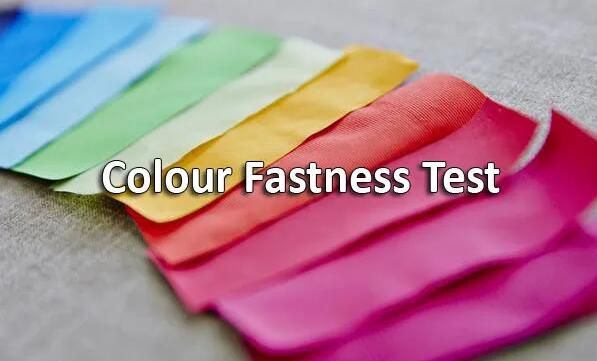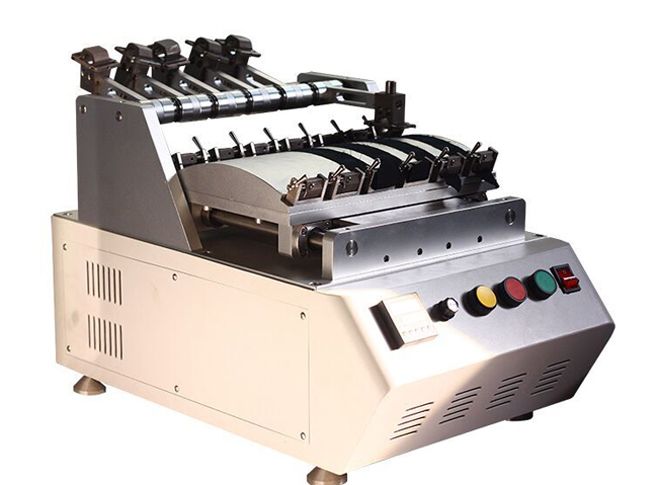What factors can affect the results obtained from a color fastness rubbing test?
Fastness to friction is a textile color fastness test, is also one of the most common test items in the textile trade process, it refers to the degree of color loss of dyed fabrics after rubbing, is to assess the resistance of dyes to mechanical friction, divided into dry state friction and wet state friction.

Its principle is to specify the size of the textile specimen with clamping device to fix the specimen in the friction test instrument platform, and then respectively with a dry friction cloth and a wet friction cloth friction, and finally the degree of white cloth staining as the basis for evaluation, against the standard gray sample card, a total of five levels, the greater the level, said the better the friction fastness, friction fastness of poor fabric will seriously affect its use.
Many factors affect the fabric rubbing color fastness, the following analysis of several factors:
1. The influence of the fabric surface form
As the unconsolidated dyestuff is the main cause of poor friction color fastness, in the dry state conditions, for the surface rough or wear down, pile fabric, hard such as hemp fabrics, denim fabrics and paint printing fabrics, if dry friction is very easy to fabric surface accumulation of dyestuff, paint or other colored material grinding down, or even cause part of the colored fiber fracture and the formation of colored particles, so that the dry friction fastness further decline.
For abrasive or pile fabric, the fabric surface of the pile and friction cloth surface is a certain angle, and not parallel, so that the friction head in the reciprocal movement of friction resistance increases, so that such fabrics dry friction color fastness decreased.
2. The influence of the chemical structure of reactive dyes
Dyed with reactive dyestuff cellulose fiber fabrics in the wet rubbing color fastness test, caused by the color transfer of two main factors:
First, the water-soluble dyestuff was transferred to the friction fabric when rubbing, so that the original sample faded and made the friction cloth stained;
The second is part of the dyed fiber in the friction break, the formation of tiny colored fiber particles and was transferred to the friction fabric, resulting in staining. Therefore, may affect the reactive dyestuff resistance to wet friction color fastness factors are: the structure and characteristics of the reactive dyestuff itself; the nature of the fabric; pre-treatment effect, fabric breakage and surface finish, etc.; dyeing process and the effect of soaping after dyeing; fabric dyeing after the effect of color fixing treatment; the effect of dyeing fabric after finishing.
3. Influence of dyeing degree
Reactive dyestuff dyed fabric color fastness to wet rubbing is closely related to the depth of dyeing, that is, when wet rubbing, the amount of color transfer and dyeing depth nearly into a good linear relationship, which is the most important factor, dyeing dye supersaturation, dyeing dark color, the concentration of dyestuff used is higher, but can not greatly exceed the saturation value, because the excess of dye and can not be combined with the fiber, but only on the surface of the fabric The excessive dyestuff can not combine with the fiber, but can only accumulate on the surface of the fabric and form a floating color, which seriously affects the color fastness of the fabric to wet friction. In addition, without special treatment of cotton fibers in the wet state conditions will occur swelling, friction increases, fiber strength decreases, these are for colored fiber breakage, shedding and color transfer created a good condition.

Therefore, the appropriate pretreatment of cellulose fibers before dyeing, such as mercerization, burnt wool, cellulose enzyme brightening treatment, boiling, bleaching, washing, drying can improve the surface finish of the fabric and gross effect, reduce friction resistance, reduce floating color, so as to effectively improve the color fastness of the fabric to wet friction.
4. The influence of softener
Improve the color fastness of reactive dye printing through soft finishing. Softener has a lubricating effect, can reduce the friction coefficient, thus preventing dye shedding. Cationic softener can also and anionic dyes to form a color precipitation, dyes are not easy to fall off. At the same time, the color precipitation makes the dye solubility decrease, can improve the wet friction fastness. However, the softener with hydrophilic group is not conducive to the improvement of wet friction fastness. In the production practice, the water-soluble group of dyestuff can be closed by using color fixing agent to control the pH value of the finished color fabric, remove the floating color and improve the smoothness of the fabric, so as to improve the wet friction fastness of the fabric. Proper pre-drying of the front section can avoid the dye "swim shift". The first two are closely related to the degree of hydrolysis of dyestuff, and the last two are directly related to the floating color of dyed products.
5. The influence of fabric structure
About the fabric structure and the surface form of the fabric on the impact of rub resistance color fastness, people have not given too much attention. Light type of fabric (usually synthetic fibers or silk fabrics) of the sample surface, due to the relatively loose fabric structure, in dry friction, the sample under the action of pressure and friction will occur with the friction head movement and part of the slip, so that the friction resistance increases, and friction efficiency. However, when wet friction is performed, the situation is completely different from that of cellulose fibers. Due to the extremely low moisture absorption of fibers or water expansion effect is not obvious, and the presence of water plays a lubricant role, which makes such fabrics to be significantly better than the color fastness to dry friction color fastness, which is commonly believed that the dry friction color fastness of textile products should be better than the concept of wet friction color fastness to form a clear contrast, and often cause people's doubts.
Therefore, for some specific fabrics, wet rubbing color fastness is better than dry rubbing color fastness phenomenon is not uncommon. At this time, the selected dyestuff varieties, dyestuff performance, dyeing and finishing process conditions, although will also have an impact on the friction fastness, but compared with the fabric's tissue structure and surface form and other physical factors, it is not very important. Data and statistics show that the occurrence of such love wishes or most of the dark-colored products, such as black, red and navy. Of course, for fabrics such as corduroy, twill and paint printing, under wet conditions, due to its own dyestuff and printing and dyeing process, its wet rubbing color fastness is usually level 2, or even lower, and is not better than its dry rubbing color fastness.

